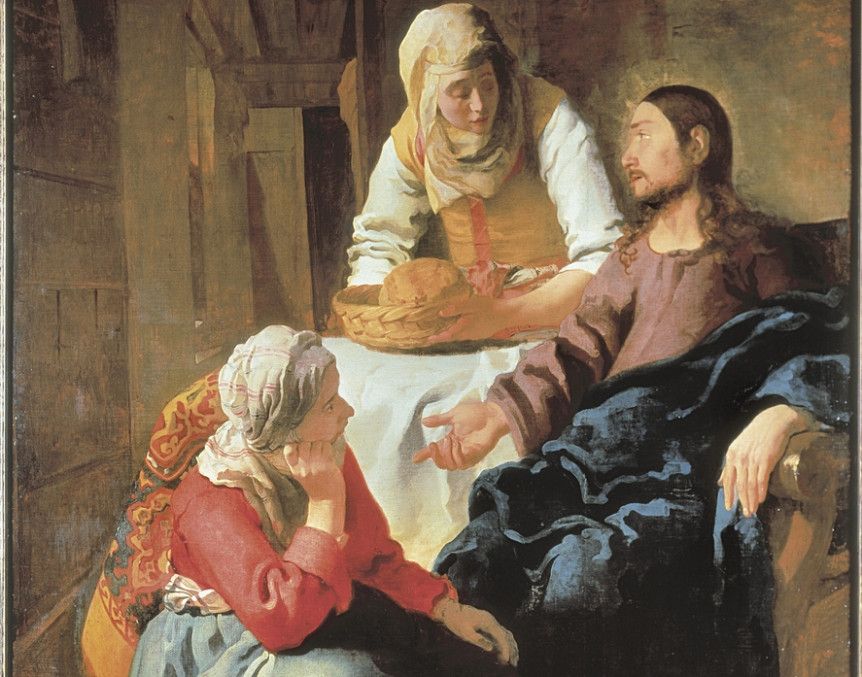WOMEN IN SCRIPTURE’S INTERPRETIVE CIRCLE
Given the obvious diversity of texts regarding women in Scripture, we seek to properly interpret them as they appear within the redemptive storyline of Scripture. One way to discern the meaning of these texts is to understand them as normative, descriptive, or corrective. We function in an interpretive circle regarding Scripture, moving back and forth between what appear to be normative and descriptive texts and what appear to be corrective texts, and seeing how well the data is explained by this relationship. Let me explain what I mean by normative, descriptive, and corrective texts.
NORMATIVE TEXTS:
Normative texts tell us who women are. Identity drives behavior. Normative texts embody the controlling vision of the True Story, including women within that vision (Genesis 1:26-28 and 2:18-25, Luke 8:1-3 and 10:38-42, Matthew 19:1-9, Acts 2:14-36, Galatians 3:28). These texts reveal male and female as co-equal divine image-bearers, created for one-flesh intimacy by the Lord God. These texts also reveal that Jesus discipled women and redeemed women from the curse of the fall. Furthermore, these texts describe the outpouring of the Spirit on all women who call on the name of the Lord.
DESCRIPTIVE TEXTS:
Descriptive texts describe women in the church embodying God’s redemptive action in Jesus Christ. Paul describes women praying and prophesying in the assembly (1 Corinthians 1l:2-16, 12-14). Priscilla and Aquila taught Apollos, a well-known preacher from Alexandria (Acts 18:24-26). Paul and Luke do not hesitate to name women as exercising leadership in the early church. In his letters, Paul greets women who were significant in the various churches: Apphia and two other leaders in Colossae (Philemon), Nympha in Laodicea (Colossians 4), and Euodia and Synctyche (Philippians 4). In Romans 16:1, Paul encourages the recipients of the letter to greet Phoebe, whom he calls a deacon. The word translated “servant” is also used to describe Paul, Timothy, Tychichus, Apollos, and Epaphras. So if this was an office for these men, it was an office for this woman.
He also refers to Phoebe who brings the letter to Rome as a prostatis, a benefactor that is referred to in other places as “those over you in the Lord” (1 Thessalonians 5:12) or to designate church officials who preside over a congregation (1 Timothy 3:4-5, 5:17). In Romans 16:7 Paul sends greetings to a missionary couple, Andronicus and Junia, whom he calls “prominent among the apostles.” Apostle means “one sent with authority.” There is no doubt that the Greek translated Junia as feminine and that Paul is referring to a woman apostle. The church in Philippi met in the house of Lydia, a seller of purple. If the church met in your house, you were the church’s leader (Acts 16:35-40).
CORRECTIVE TEXTS:
The corrective texts regarding women appear in two letters, written on specific occasions , 1 Corinthians and 1Timothy . These corrective texts correct abuses in Corinth and Ephesus. They do not correct the rest of the New Testament. It is important for us to faithfully interpret these letters and to place their content within the wider circle of redemptive revelation. The corrective texts clearly do not correct the normative or descriptive texts of scripture.
Given the dignity of women in the creation and the recovery of her dignity in Christ’s new creation, the question becomes, “By what authority would Christ’s Church, his body on earth, restrain women from doing whatever the Spirit of God has raised them up to do?”
(For further reading see Redeeming Eve by Jim Reynolds, available on Amazon.)

